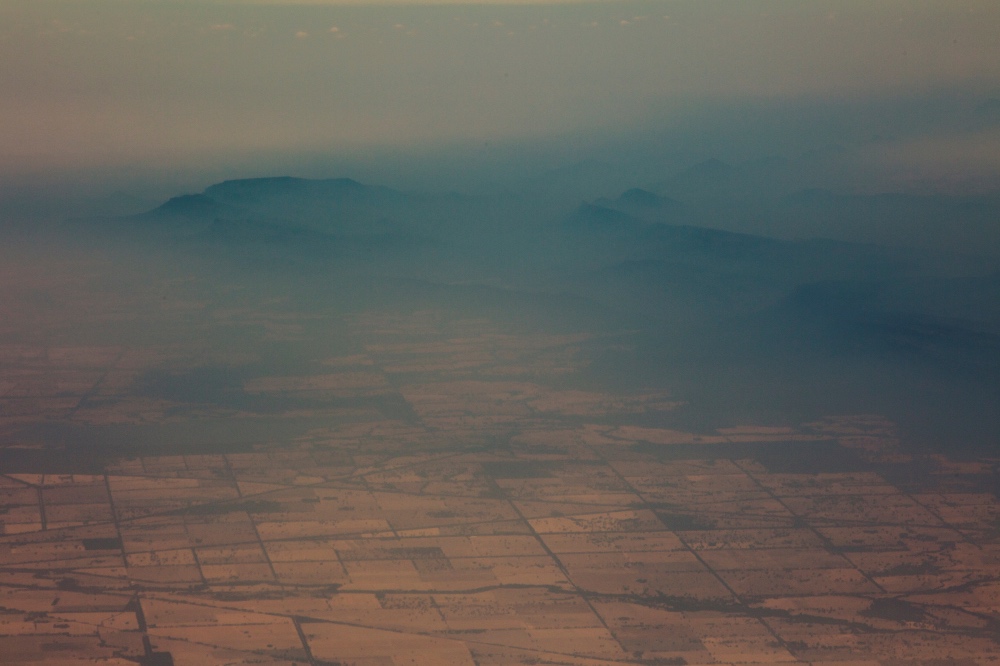Melbourne, Australia
Reuters
Authorities issued new warnings and evacuation notices across south-east Australia on Thursday, as a return of hot weather fanned huge bushfires threatening several towns and communities.
A disaster level notice in large parts of Victoria state, already in place for the past week, was extended by 48 hours and people in danger zones were advised to leave if it was safe to do so.

Smoke and haze over mountains are seen from a No 11 Squadron P-8A Poseidon conducting damage assessment and surveillance in the bushfire-affected area near Cooma, New South Wales, Australia, on 7th January. PICTURE: Sgt Murray Staff/Australian Department of Defence/Handout via Reuters
“Don’t get complacent from the rain we have had recently,” Victoria Emergency Services Minister Lisa Neville said in a televised briefing, referring to several days of cool weather that has allowed firefighters to strengthen containment lines around blazes that have been burning for months.
“These fires are absolutely still moving, still growing in our landscape and they pose significant risk to communities,” Neville said.
Twenty-six people have died, thousands have been made homeless and thousands of others have had to evacuate repeatedly as the monster fires have scorched through more than 10.3 million hectares of land – an area the size of South Korea.
Authorities have said the blazes will continue to burn, posing extreme danger at times of high temperatures and winds, until the country experiences significant rainfall.
The official weather agency on Thursday confirmed fears that there was no sign of that happening in the next few months as it released its annual report, which also showed that 2019 was Australia’s hottest and driest year on record.
The current crisis was sparked into life following a three-year drought that has left much of the country’s bushland vulnerable to fires.
Many towns were without power and telecommunications and some were running low on drinking water supplies. Smoke has blanketed Sydney, Melbourne and Canberra, and drifted as far as South America.
Parts of Kangaroo Island, a wildlife-rich tourist spot off the country’s southeast coast where Prime Minister Scott Morrison on Wednesday made a plea for foreign tourists not to be deterred by the fires, were again evacuated on Thursday. A third of the island has already been destroyed by fires.
The following are some highlights of what is happening in the bushfire crisis:
• Victoria state officials said “strike teams” of firefighters were being sent into high-risk areas, but new blazes could start anywhere given a forecast for extreme heat and potential lightning strikes. Officials credit the evacuation of tens of thousands of people in recent weeks with keeping the death toll from the fires low.
• New South Wales state on Thursday announced new funds of A$1 billion ($686 million) to rebuild infrastructure and communities affected by the bushfire.
• The majority of the fires that have devastated much of Australia’s east coast occurred in New South Wales, where 1,870 homes have been destroyed so far, authorities said.
• Prime Minister Scott Morrison on Wednesday urged foreign tourists not to be deterred by deadly wildfires, fearing a lack of holiday-makers could hurt the economy. Some normally crowded resorts have already turned into ghost towns.
• Moody’s Analytics said the cost of the fires could easily surpass that of the deadly 2009 Black Saturday fires that destroyed 450,000 hectares of land, which cost an estimated $A4.4 billion.
• Prime Minister Scott Morrison has pledged $A2 billion to a newly created National Bushfire Recovery Agency.
• Ecologists at the University of Sydney on Wednesday doubled their estimate of the number of animals killed or injured in the fires to one billion.
• The fires have already emitted 400 megatonnes of carbon dioxide into the atmosphere and produced harmful pollutants, the EU’s Copernicus monitoring programme said.
• Smoke has drifted across the Pacific, affecting cities in South America, and may have reached the Antarctic, the UN World Meteorological Organization said.





